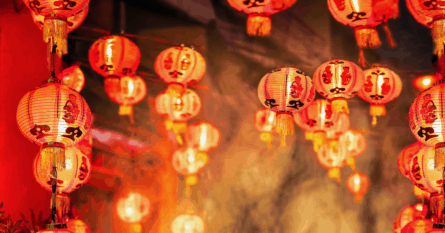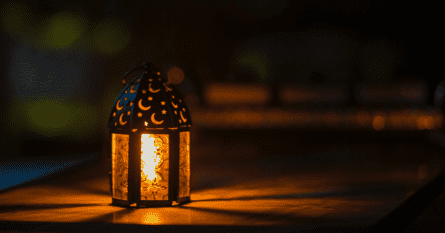Estimated reading time: 16 minutes
Join us, to find out what countries celebrate Lunar New Year and how this festival reflects their rich culture and history.
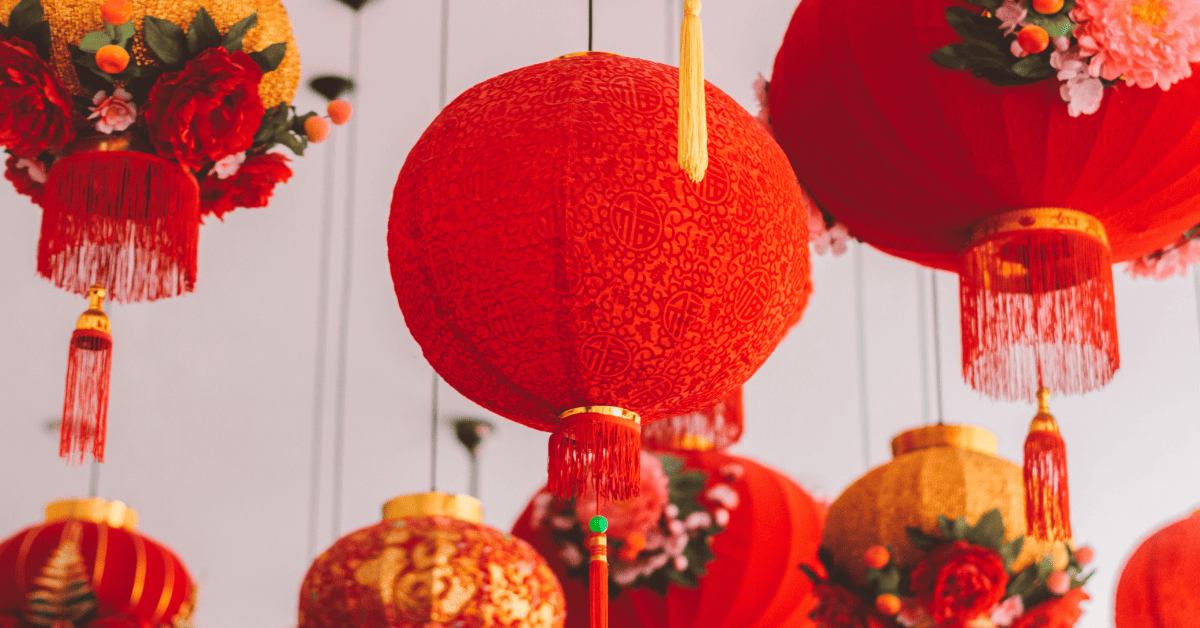
Lunar New Year, also known as Spring Festival or Chinese New Year, is a traditional public holiday celebrated in China, Thailand, South Korea, North Korea, Malaysia, the Philippines, Indonesia, Vietnam, Singapore, Brunei and Bhutan.
It is a celebration of life, tradition, and culture that spans across many countries and regions in Asia and beyond. As the weather is still cold and snowy, the festival signifies the last of the freezing days. People embrace the arrival of spring and its gifts: planting, harvesting, and a new beginning.
It’s interesting to note that although the Lunar New Year and Chinese New Year terms are related and used interchangeably, they are not exactly the same. Lunar New Year is a more general term that refers to the start of a new year based on a lunar calendar, which is used by many Asian countries. Chinese New Year is a specific festival that celebrates Chinese culture and traditions.
If you are curious about which countries celebrate Lunar New Year and when is Lunar New Year, you have come to the right place. In this article, we will answer these questions and more, as we explore the varied traditions of this ancient festival.
Table of Contents
- When is Lunar New Year?
- The History of Lunar New Year
- The Traditions of Lunar New Year
- Which Countries Celebrate Lunar New Year
- Lunar New Year Celebrations in The Western World
- The Best Way to Deal with Festive Traffic
- FAQs about Lunar New Year
When is Lunar New Year?
Unlike some western holidays like Thanksgiving and Christmas, which have fixed dates on the solar (Gregorian) calendar, the lunar new year changes every year according to the moon phases. It can occur anytime from January 21 to February 20. In addition, each year is associated with one of the 12 animals of the Chinese zodiac, which symbolize different traits and fortunes.
The upcoming Lunar New Year falls on February 10, 2024, and will mark the start of the year of the Dragon.
The lunar calendar still plays a significant role in China, even though the country has officially adopted the Gregorian calendar like most of the world. Many traditional festivals and events are based on the lunar calendar. Some people even use the lunar calendar to calculate their birthdays and ages.
The History of Lunar New Year
Lunar New Year spans thousands of years and is deeply rooted in ancient Chinese traditions. The festival’s origins can be traced back to the Shang Dynasty (1600–1046 BCE) when people celebrated the arrival of spring and the renewal of life. Over time, the Lunar New Year became intertwined with various legends and myths, which we’ll explore in detail below.
The Lunar New Year’s association with the lunar calendar further solidified during the Han Dynasty (202 BCE–220 CE), marking the beginning of a systematic and widespread celebration. Emperors established the official starting date of the festival, and the celebrations expanded to include various rituals, performances, and culinary traditions. As centuries passed, the Lunar New Year evolved into a comprehensive cultural celebration extending beyond China to many East Asian countries and communities around the world.
The Traditions of Lunar New Year
The legend of the Lunar New Year originated from the story of Nian – a mythical creature that attacked the villagers, and devoured their harvest, animals, and children. The villagers discovered that the beast had the body of a bull and the head of a lion, and they found out its fear: its red color, flames, and loud sounds. Using this information, the villagers overcame Nian. Therefore, the customs of dressing in red, setting off firecrackers, and performing the lion dance during the new year emerged.
The Color Red
As mentioned, red is the dominant color of the season, as it symbolizes good luck and prosperity for everyone. People wear bright red clothes, give red envelopes, and hang red lanterns and flags with golden details. However, people avoid wearing black and white colors, which are usually associated with grieving and mourning. Especially on New Year’s Day, wearing these colors is considered bad luck and disrespectful to the ancestors.
Cleaning the House
Before the Spring Festival, people clean their houses thoroughly to symbolize sweeping away the previous year’s misfortune and welcoming good luck into their homes. But, on New Year’s Day, they avoid sweeping the floor or disposing of garbage and water outside the house, as this could mean losing their newly acquired fortune.
Reunion Dinner
The reunion dinner, also known as ‘tuan nien fan’ or ‘nian ye fan’ in Chinese, is a special meal that takes place on the eve of the lunar new year. It is a time for family members, some of whom may have traveled long distances to return home, to gather and celebrate the end of the old year and the beginning of the new one. The reunion dinner is considered the most important and festive meal of the year, and it usually features a variety of dishes that symbolize luck, prosperity, and happiness. Some of the common foods include dumplings (wealth), fish (surplus), chicken (happiness), noodles (longevity), and spring rolls (prosperity). The reunion dinner is also an occasion to exchange red envelopes, watch the New Year Gala show, and set off fireworks and firecrackers at midnight.
Greetings and Gifts
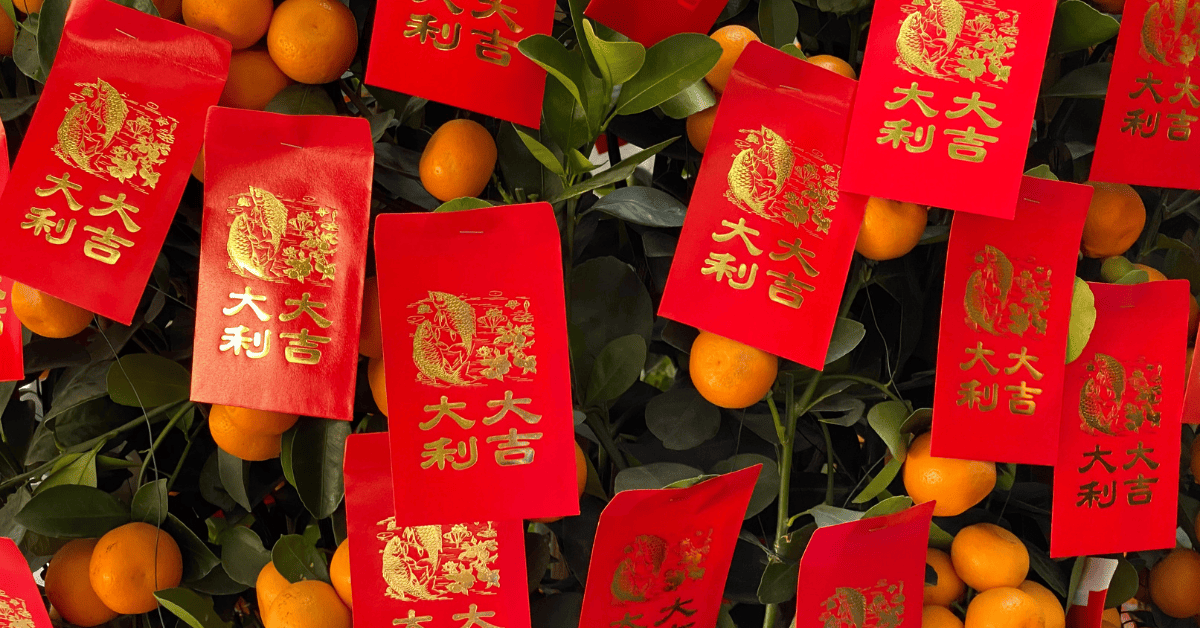
One of the first things that people do during Chinese New Year is ‘bai nian’, a way of greeting and blessing each other that often involves exchanging gifts according to tradition. The usual gifts are a pair of Mandarin oranges and a red packet containing money. These red packets are given by married friends and relatives to unmarried adults and children, who express their gratitude by wishing them health and fortune.
The Lion and Dragon Dance
The lion dance and the dragon dance are two traditional Chinese folk activities that are often performed during festivals and celebrations, especially the Lunar New Year. They are both meant to bring good luck and ward off evil spirits, but they have different origins, appearances, and styles.
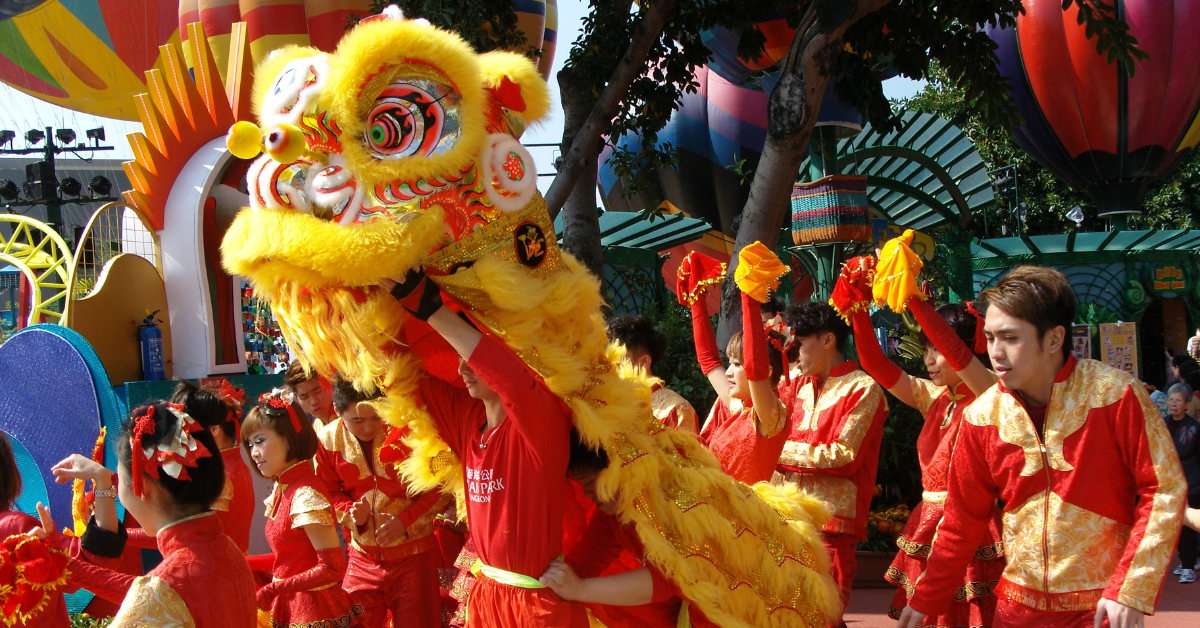
The lion dance is inspired by the lions that were introduced to China from West Asia along with Buddhism. The lion is regarded as an auspicious animal and a symbol of power and courage. The lion dance usually has two performers inside a shaggy costume with blinking eyes, who imitate the movements of lions. They are accompanied by a person dressed as a laughing Buddha, who teases the lion with a fan. The lion dance is more brisk and energetic, involving acrobatics and martial arts.
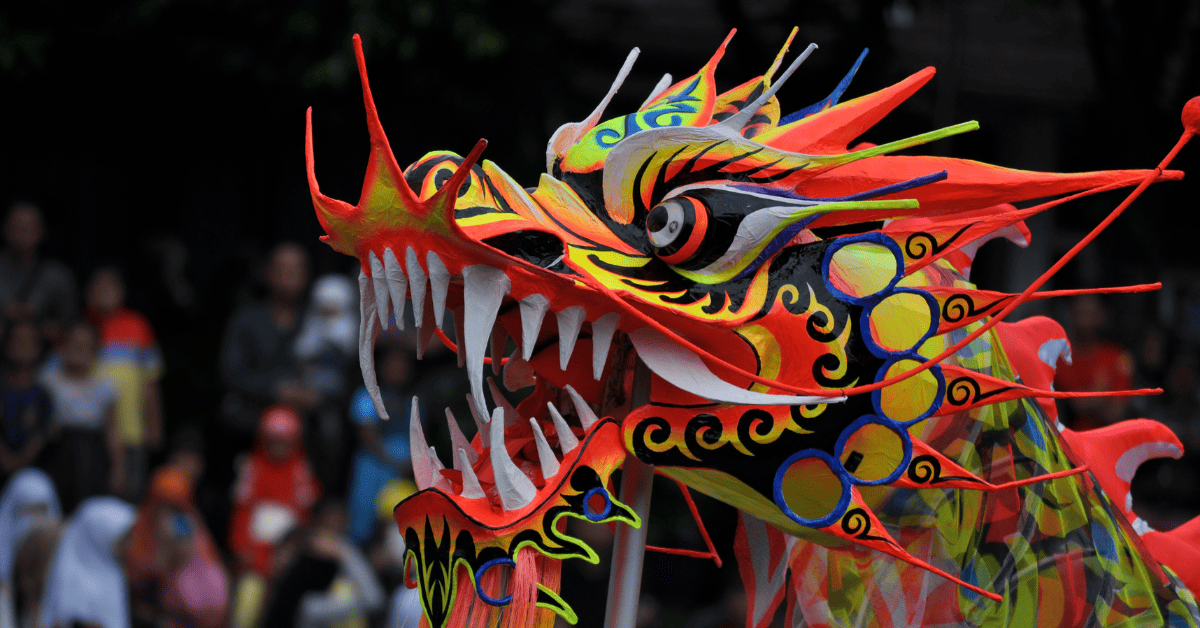
The dragon dance is based on the Chinese dragon, which is a mythical creature that represents wisdom and prosperity. The dragon dance requires several performers to manipulate the long and slender body of the dragon, which is decorated with scales and a head that resembles a Chinese dragon. They are guided by a person who holds a ball or a pearl, which represents the dragon’s treasure. The dragon dance is more fluid and graceful, requiring coordination and speed.
Both dances are accompanied by an orchestra playing drums, gongs, and cymbals, creating a festive atmosphere. They are also sometimes adorned with fireworks that produce sparks, adding to the spectacle.
Which Countries Celebrate Lunar New Year
China
Lunar New Year, or ‘Guo Nian’, is a grand celebration that lights up the entire China. Families eagerly anticipate this joyous occasion, and the festivities extend across approximately 15 days. Streets come alive with vibrant decorations, adorned in red and gold, all in traditional Chinese style.
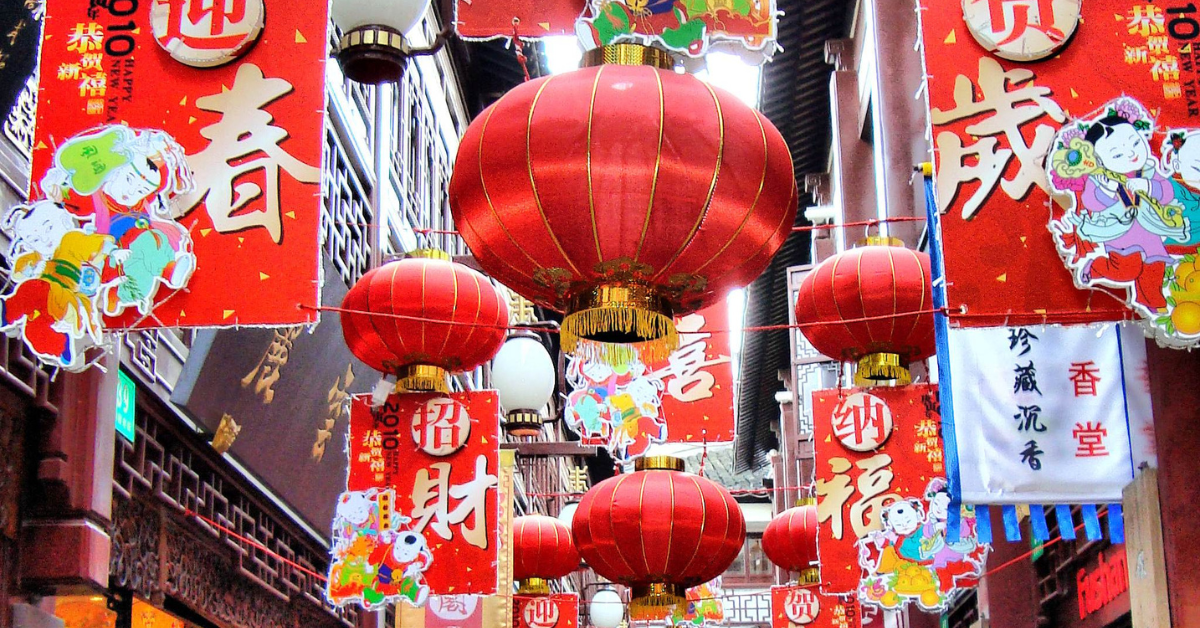
During this period, people follow various customs and traditions, such as cleaning their houses, putting up red decorations, giving red envelopes, and paying visits to relatives and friends, as well as remembering and honoring the departed by visiting their graves.
The heart of the celebration lies in family reunions, where generations gather for sumptuous feasts. Traditional dishes like dumplings, fish, and niángāo (rice cake) grace the tables. Many people also stay up late to welcome the new year, and set off firecrackers at midnight to scare away evil spirits.
Typically, on Chinese New Year’s Eve or New Year’s Day, the young or unmarried ones express their well-wishes to their parents and grandparents. In return, they receive the famous red envelopes containing money, which extend wishes for good luck in the upcoming year.
Throughout the festival, there are various forms of entertainment, such as lion dances, lantern shows, temple fairs, and riddle games. People also enjoy eating different kinds of snacks like candied fruits, nuts, seeds, and pastries.
The celebration ends with the Lantern Festival on the 15th day of the new year, when people light lanterns, guess lantern riddles, eat sweet dumplings, and watch fireworks. The lanterns are often shaped like animals, flowers, or characters, and have wishes or riddles written on them. This year the Chinese Lantern Festival will be celebrated on February 24, 2024.
South Korea
‘Seollal’ is the Korean celebration of the Lunar New Year, a three-day festive occasion that emphasizes family bonds and draws individuals back to their hometowns, distinguishing it from the more socially-oriented nature of Christmas in Korea.
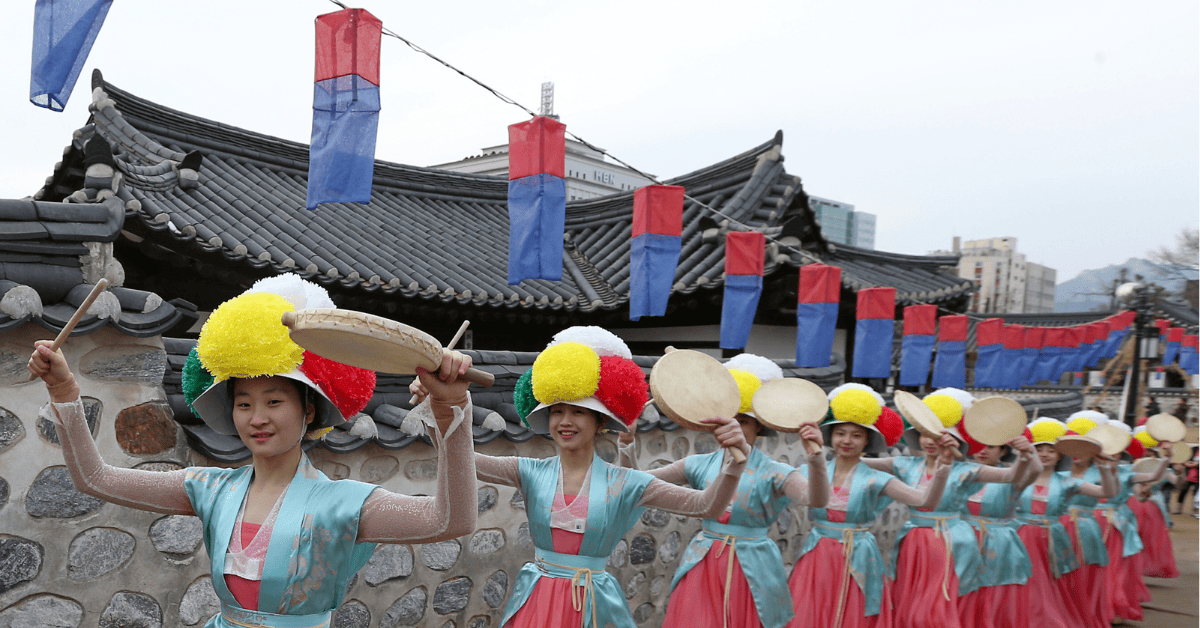
Similar to China, one of Seollal’s central traditions involves performing ancestral rites. Families gather to offer food, incense, and prayers to their departed loved ones. Following these rituals, the family members enjoy each other’s company— savoring the reunion dinner, chatting, and engaging in traditional folk games.
Speaking of food, Seollal is a feast for the senses, symbolizing abundance and harmony. The centerpiece of the celebration is tteokguk, a savory rice cake soup featuring sliced rice cakes, meat, and seaweed. Another culinary delight is jeon, or pancakes, made with green onions, eggs, and flour. This simple yet meaningful dish epitomizes unity, happiness, and the shared joy of the season.
Adding to the festive spirit is the donning of hanbok, the traditional Korean dress, adorned with a variety of colors and patterns. Symbolizing Korean culture and identity, the hanbok contributes to the festive vibe of Seollal.
Taiwan
Lunar New Year, a 16-day festival, is the most important festival in Taiwan. The origin of the festival in Taiwan is unclear; the belief is that it came with the Hakka or Hoklo migrants from mainland China during the 17th century. Although initially, the indigenous people of Taiwan had their distinct ceremonies and didn’t partake in the Lunar New Year festivities.
Taiwan and China share many cultural practices for Lunar New Year, such as hanging red lanterns on the houses, honoring the ancestors with offerings, giving red envelopes as gifts, and lighting firecrackers for good luck. However, there are some differences as well. Families also prioritize visits to Buddhist or Taoist temples, uniting in prayer for blessings and good fortune.
The culinary landscape also changes, featuring delights like pineapple cakes and dishes with daikon radish. These foods, considered lucky, resonate with the sounds of “prosperity” and “good fortune” in Hokkien, the local dialect, and add a flavorful twist to the festivities.
Malaysia
Malaysia is a land of diversity, where different ethnic groups coexist and celebrate their unique cultures and traditions. Among the three major groups of Malays, Chinese, and Indians, each has its own festivals that follow the lunar calendar. When these festivals overlap, they create a rare opportunity for cross-cultural happiness and unity. This is known as Kongsi Raya or Gongxi Raya, a fusion of the Chinese New Year and the Hari Raya Aidilfitri, also known as Eid al-Fitr, one of the most important festivals for Muslims in Malaysia.

The Lunar New Year is a time of reunion and renewal for the Chinese Malaysians. They exchange cards and gifts with their relatives and friends, and gather for a feast on the eve of the new year. One of the highlights of the feast is the variety of New Year cakes and sweets, such as love letters biscuits, peanut cookies, pineapple tarts, and so on. People also observe various customs and rituals to attract good luck and prosperity, like settling debts, avoiding negative words, and wearing red clothes.
The festival lasts for 15 days, culminating in Chap Goh Mei, or the Lantern Festival. On this night, the streets are illuminated with colorful lights and lanterns, creating a festive atmosphere. People stroll around and admire the decorations, and some even release paper lanterns into the sky, making a wish for the future.
Singapore
Lunar New Year is widely celebrated by the Chinese diaspora in Singapore, which makes up three-quarters of the population. However, the Chinese community in Singapore is not homogeneous, but rather diverse and multifaceted, comprising various ethnic groups each with its own traditions and customs for celebrating Lunar New Year; there is also a common thread that reflects the multicultural nature of Singapore, incorporating elements from neighboring Malay and Indian cultures.
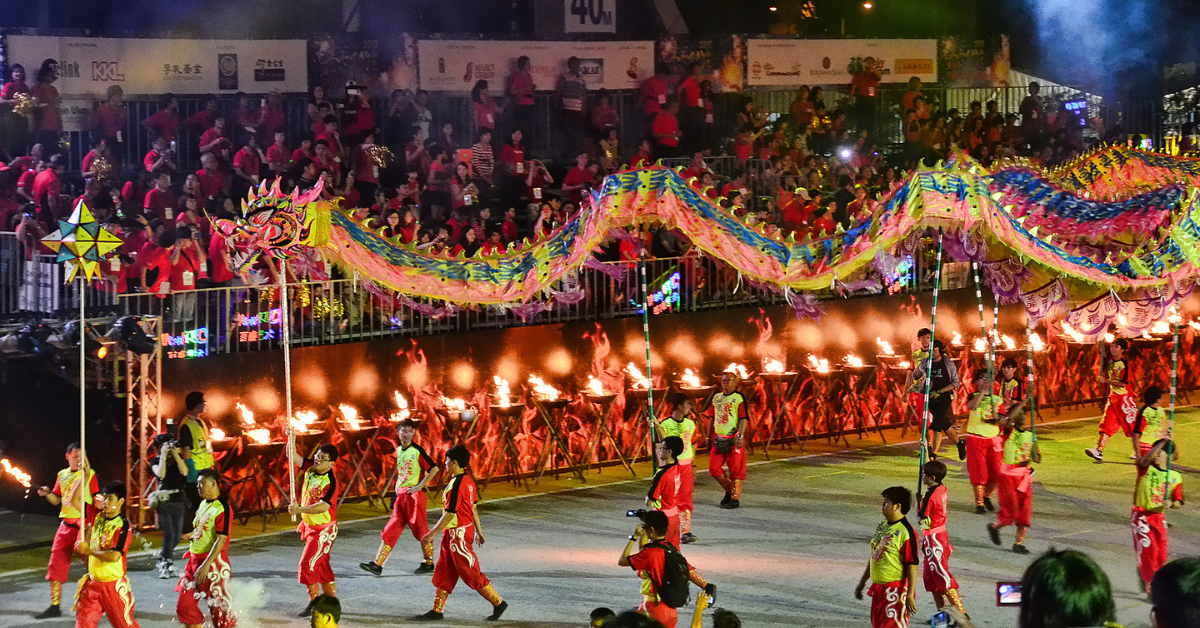
The festivities last for 15 days, from the first day of the lunar year to the Lantern Festival. One of the highlights of the festival is the Chingay Parade (February 23 and 24, 2024), a spectacular display of local art, music, and dance, featuring colorful floats and costumes. The parade also celebrates the diversity of Singapore, as it includes elements from Malay, Indian, and Eurasian cultures. Another popular event is the River Hongbao carnival, where people can enjoy cultural performances, games, and fireworks. The dates for the upcoming carnival are 8 to 17 February 2024.
Some of the common traditions that most Singaporean Chinese follow are spring cleaning, reunion dinner, visiting relatives and friends, and exchanging red packets.
Vietnam
Lunar New Year, or ‘Tet Nguyen Dan’, is the most important and festive occasion in the Vietnamese calendar. It is celebrated over three days: the day before New Year’s Eve, New Year’s Eve, and New Year’s Day. The origins of Tet date back to ancient times, when the Vietnamese people lived in the Red River Delta and depended on wet rice cultivation. Tet was a way to honor the cycle of nature and the ancestors who protected the land. However, Tet has a deeper meaning that transcends its agricultural roots. It is a time to cherish the values of Vietnamese culture, such as family, harmony, and gratitude, and to start the new year with a clean slate and good luck.
To prepare for Tet, Vietnamese people spend weeks cleaning, decorating, and shopping. They buy new clothes, get haircuts, cook special dishes, and purchase flowers and plants. One of the most common symbols of Tet is a kumquat tree or a peach blossom, that are placed in a prominent spot in the house or public area. These plants represent prosperity, health, and happiness, and the bigger they are, the better.
On the eve of Tet, families gather for a feast and exchange gifts and wishes. They also visit the temples and pagodas to pray and make offerings. On the first day of Tet, they visit their parents and relatives, and on the following days, they visit their friends and neighbors. In addition, the common traditions such as lion dances, fireworks, flower markets, and card playing are integral parts of this celebration.
Lunar New Year Celebrations in The Western World
Lunar New Year transcends borders and traditions, creating diverse celebrations worldwide. Let’s take a look at some of the most spectacular festivities, and which countries celebrate Lunar New Year across the world.
San Francisco
The San Francisco Lunar New Year Festival and Parade is an annual event that dates back to 1851, making it the oldest and one of the largest of its kind outside of Asia. The festival lasts for about two weeks, and features a variety of activities, such as flower markets, street fairs, cultural performances and fireworks.
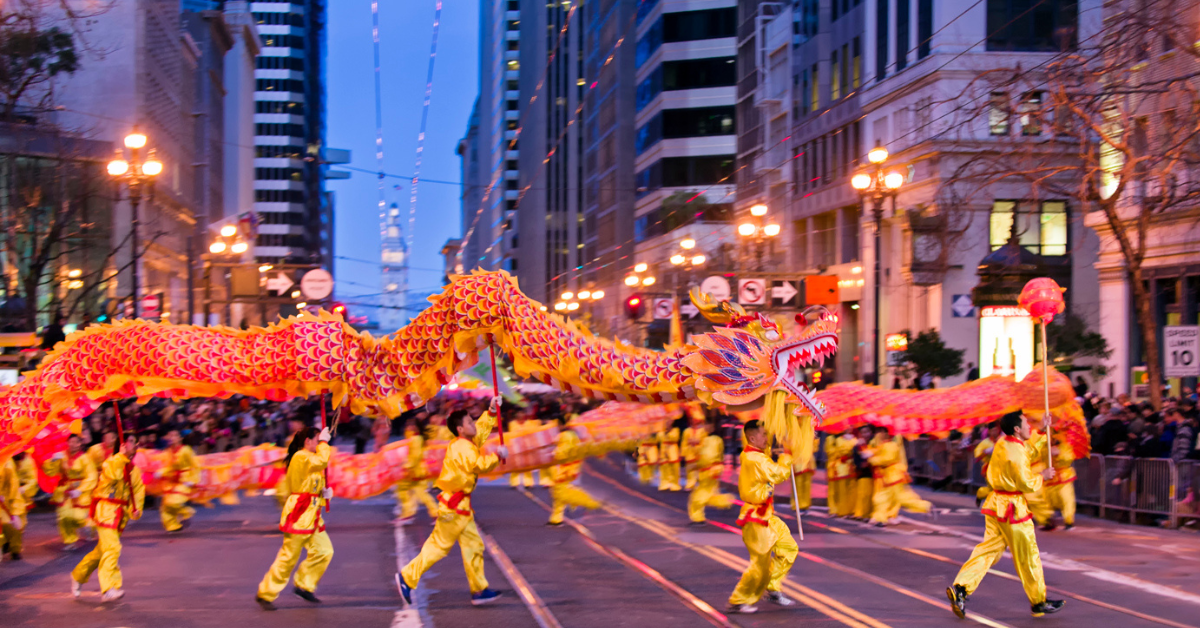
The highlight of the festival is the grand parade, which combines elements of the Chinese Lantern Festival with a typical American parade. The parade starts on Market Street and ends in Chinatown, and showcases colorful floats, marching bands, acrobats, martial artists and the famous 268-foot-long Golden Dragon, which is operated by over 100 people.
The upcoming San Francisco Chinese New Year parade will be held on Saturday, Feb 24, 2024, at 5:15 p.m.
New York City
New York City is home to one of the largest and most diverse Chinese populations in the world, and its Chinatown is a bustling hub of culture, commerce and cuisine. Every year, thousands of New Yorkers flock to Sara D. Roosevelt Park for the firecracker ceremony, which is believed to ward off evil spirits and bring good luck for the new year.
The ceremony is followed by a spectacular parade, featuring lion dancers, dragon dancers, floats, musicians and even celebrities. The parade winds through the streets of Chinatown, Little Italy and Lower East Side, and attracts over half a million spectators.
The New York Lunar New Year 2024 celebration lasts for 16 days, from February 10th to February 24th, ending with the Lantern Festival.
Los Angeles
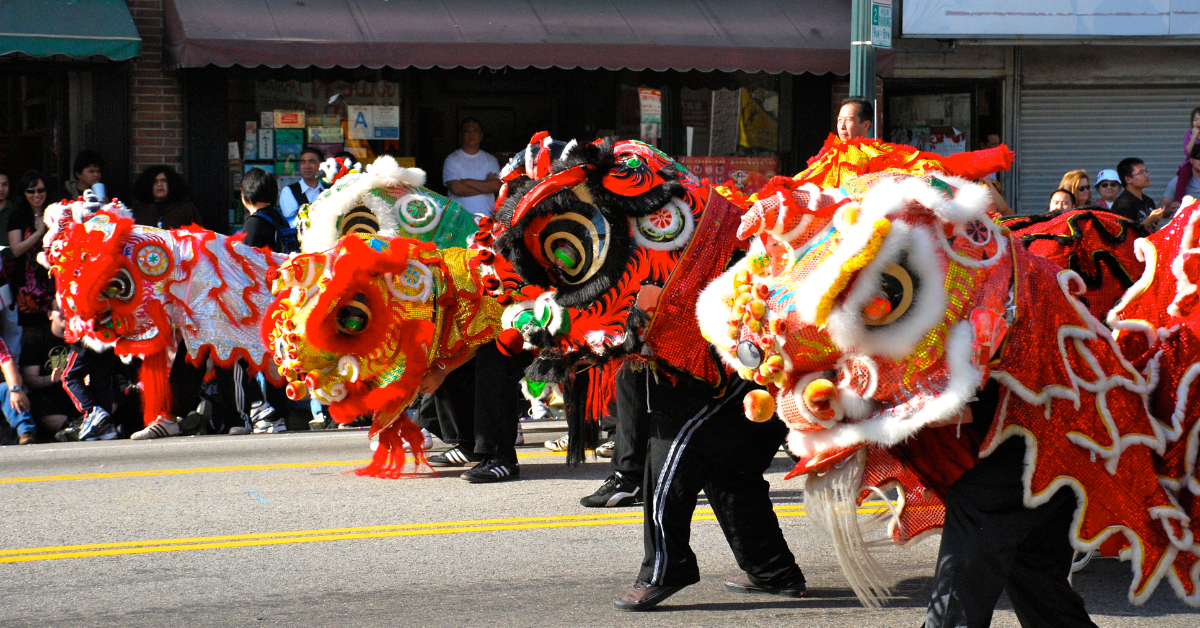
With a legacy of Chinese immigration that spans over a century, Los Angeles hosts the historic Golden Dragon Parade, which is over a hundred years old – even older than the Hollywood sign! The parade brings together floats, marching bands, costumes and crowds to North Broadway, and celebrates the diversity and harmony of the Chinese American community. The parade is accompanied by a festival, which will take place on February 17, 2024, and offers food, crafts, entertainment and cultural exhibits.
Vancouver
Vancouver is one of the most multicultural cities in Canada, and has a large and vibrant Chinese community. The city celebrates the LunarFest with the Spring Festival Parade that features traditional lion dances, cultural dance troupes and martial arts performances. The parade starts from the Millennium Gate and ends in Chinatown, where the parade draws huge crowds of locals and visitors. The Lunarfest takes place on February 9, 2024.
Manchester
Mark your calendars for Saturday the 10th and Sunday the 11th of February, 2024, for grand Chinese New Year celebrations in Manchester. As home to one of the UK’s largest and oldest Chinese communities, the city celebrates Chinese New Year with a colorful festival, featuring a range of events and activities, such as lantern making, calligraphy workshops, food stalls, and live music. The festival culminates with a spectacular parade, with traditional lion and ribbon dances, Chinese Opera performers, giant Buddha dolls and a Chinese Scout parade.
The Best Way to Deal with Festive Traffic
We’ve compiled a list of some of the best places that celebrate Lunar New Year. However, it’s essential to keep in mind that, as joyful as they are, traffic can become incredibly congested in certain locations, making it challenging to reach your destination on time and in a relaxed state.
For a truly stress-free festive journey, count on Blacklane. By booking your chauffeured ride with Blacklane, you’re choosing the most convenient way to reach your destination, saving you time and hassle.
With our top-tier sedans as well as larger SUVs or Vans for larger families, there’s an option for everyone, and you can feel good about your footprint since all our rides are carbon offset. Just choose the best time for you and leave the driving to the professionals. Plus, if your plans change you can easily change your booking or cancel for free up until 1 hour before your ride.
FAQs about Lunar New Year
Which countries celebrate Lunar New Year?
Many countries celebrate the Lunar New Year, including China, Vietnam, South Korea, Malaysia, Singapore, Taiwan and others.
What is the difference between Lunar New Year and Chinese New Year?
Lunar New Year is a broader term encompassing various Asian cultures, while Chinese New Year specifically refers to the celebration in Chinese culture.
How do you celebrate the Lunar New Year?
Lunar New Year celebrations vary, but common traditions include family gatherings, feasting, dragon and lion dances, and giving and receiving red envelopes for good luck.

